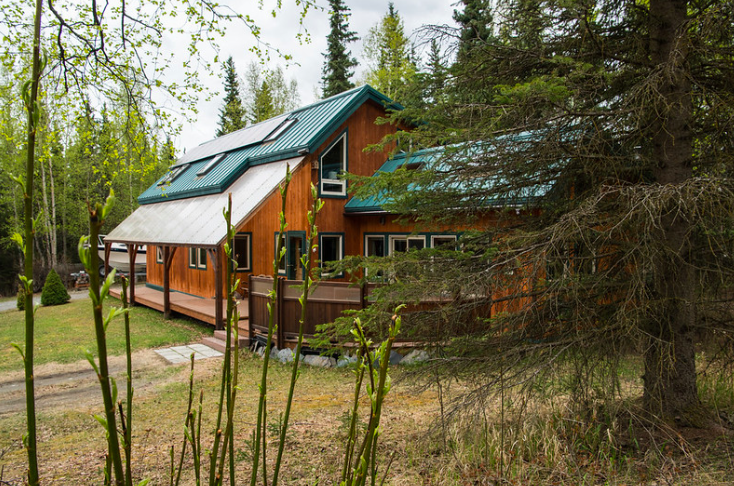Robert Seitz: An Alaska energy plan that pulls together all the pieces
June 7, 2025
By ROBERT SEITZ
I was going to continue writing on the topic of climate by responding to an article from Yereth Rosen on the cost of permafrost related damage, and the response from Rep. Kevin McCabe, but I attended the Commonwealth North Forum on Cook Inlet gas recently and attended another meeting about annual net metering for grid-tied renewable energy. I spent much of one afternoon thinking on both these meetings and the context of Alaska Energy, so changed my immediate plans.
I consider the attitude of Alaskans, and the population nationwide on whether greenhouse gas is the primary cause of warming of our planet or if we have just recovered (or are recovering) from the Little Ice Age, to be most important to developing a proper energy plan.
Those who read my columns know I think that greenhouse gas is not a significant problem and that IPCC and various complicit organizations around the world that manipulate the climate data to enhance the argument of human caused warming through emission of greenhouse gases are misleading the masses. This premise will lead to a totally wrong energy solution as our bulk power generation needs to be based on high energy density fuels.
I have stated in many of my articles that wind and solar are appropriate for locations that do not have high energy density fuels readily available, or where they are prohibitively expensive. I also promote residential and commercial solar projects which are connected behind the meter, or on the load side of the meter.
Utility scale wind and solar projects installed in Alaska must be thoroughly thought out and properly engineered on both the Utility side and the Solar/Inverter side to be truly beneficial to Alaska. There are complexities of Inverter Based Resources (IBR), which are generally using variable sources of energy (wind and solar). Problems in states with high IBR penetration and the recent power outage in Spain and Portugal should give pause to consideration of increased use of utility scale IBR without providing inertia and long term energy storage (i.e. not batteries) with the design of new installations. Geothermal, tidal and nuclear power are three alternate sources we can look forward to that will provide less variable power that would more sustainable and resilient than wind or solar power.
Now back to Alaska energy and how to move forward.
We learned at the Commonwealth North “Energy on the Edge: Future of Cook Inlet Gas” that to provide confidence to utilities that we have enough gas on hand, we need to drill more wells.
But drilling more wells just to have in reserve does not pay for those wells if they don’t flow gas. We need a financial mechanism that provides financial resources to the producer to cover the expense of drilling new wells. Legacy financial institutions have been influenced by ESG (Environmental, Social, Governance) policies and are less likely to finance any hydrocarbon fuel projects in the recent past. That influence is still present.
So let’s try something different. A few years ago I thought that venture capital could be set up in Alaska so that individual citizens of Alaska could invest in a venture capital fund so they could earn from Alaska projects. Each Permanent Fund dividend recipient could be allowed to designate a portion of their annual dividend to a venture capital fund that could provide financing to particular Alaska projects.
This Cook Inlet gas drilling effort could be one of those qualified projects. Alaska Industrial Development and Export Authority could manage the fund and provide financing to gas producers in Cook Inlet to encourage drilling enough holes to provide more certainty of gas reserves to provide the confidence needed. So we are on our way to secure our future with Cook Inlet gas.
Next, the Alaska LNG project can help with our Railbelt energy issues by accelerating the North Slope-to-Fairbanks gas pipeline to get gas into Fairbanks and the rest of the interior sooner than later. With natural gas in Fairbanks, a new natural gas fueled power plant could be built, which would provide less dependence on power from the south and reduce the demand on Cook Inlet gas for energy for the Interior.
I still recommend large long duration energy storage to enhance the ability to save summer solar for use in the winter or other times of need. Pumped hydro seemed to be an ideal means to store renewable energy at the time of generation, and to store the potential energy for a long time, (i.e. many months). No one seems to be very excited about pump hydro, but we’ll leave that tool on the table for use eventually.
The non-hydro energy storage means are all still fairly short duration. Batteries are not long duration and cannot discharge at significant rates for any significant length of time, so we should not build very many battery energy storage systems (BESS). We just need to install sufficient BESS to provide system stability for the utility without much consideration for the variable energy sources to be installed. We need to focus on non-hydro long duration energy storage to be installed through-out the Railbelt to have an energy source available for whatever part of the system is islanded from the Railbelt grid and these energy storage devices can drive rotating machines to ensure there is inertia in that part of the system that will allow existing and normal controls and protection means to function properly.
As I have mentioned before, the island of Kauai can use BESS with their solar because the sun will be there every day, for about the same amount of time every day and it will not be freezing. Here in Alaska, I continue to advocate for storage of the solar energy for those cold stormy days. If the utility scale wind and solar can directly feed storage and then have the energy released through a high inertia rotating machine we can definitely improve our sustainability and resilience.
Of immediate importance is that Alaskans in leadership positions must look at the available data to determine how realistic the climate crisis concerns are. My findings show that while the average annual temperature may be increasing slightly, the high temperature is not increasing over historical norms. The high annual average gets higher when less cold temperatures in the winter while summer temperatures remain in their historical normal range. We need people looking at the impact of the Little Ice Age and make a determination of whether or not our present condition is just a recovery from that era. I have been following the jet stream movements the last three or four years and it sure looks like the unusual weather across the country and the world is driven by the changes in the jet stream. If that is the cause of the “climate problems,” then our focus needs to be on adapting and preparing for the impact of high rainfall, high winds, or lack of rainfall.
Planning for the future of our energy and power systems is simplified if we truly understand our weather and our climate.
Robert Seitz is a professionally licensed electrical engineer and lifelong Alaskan.
Search
RECENT PRESS RELEASES
Related Post



